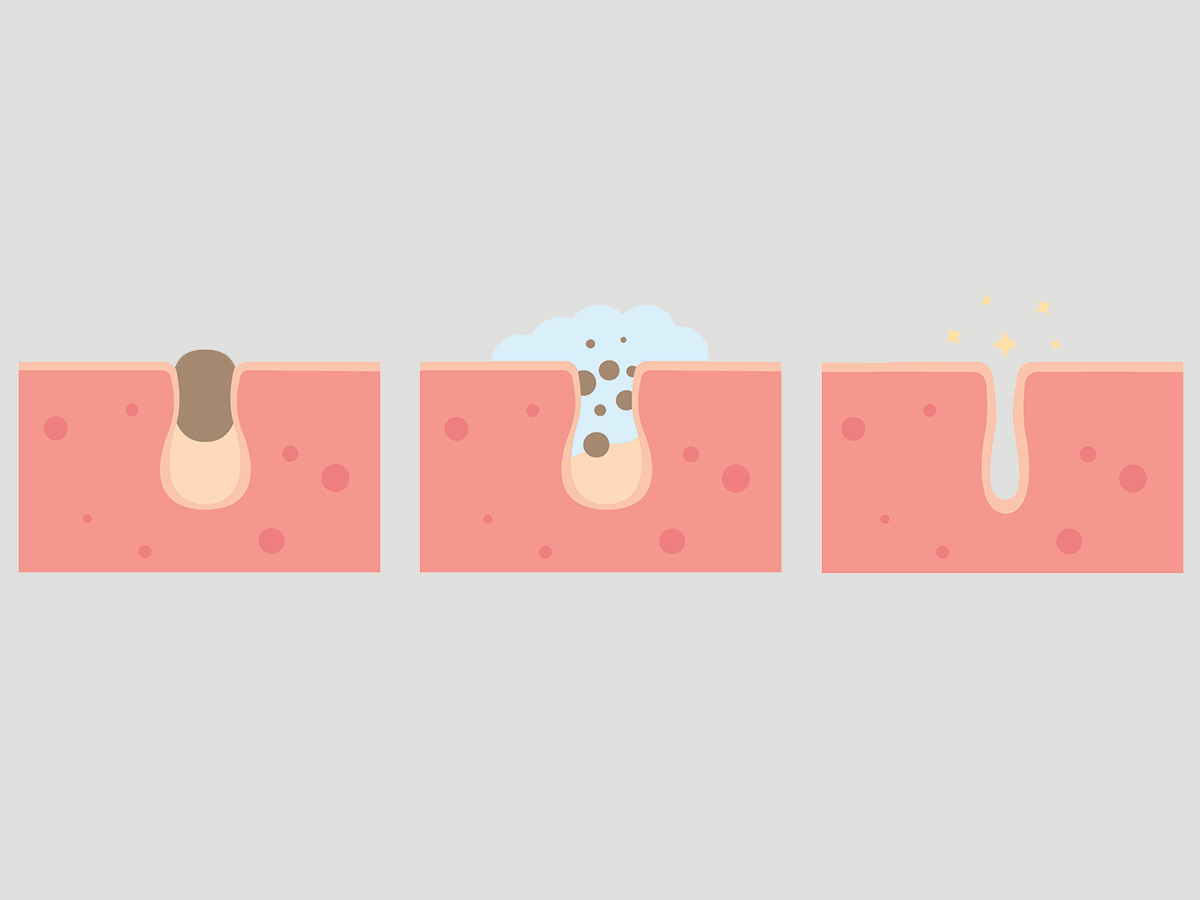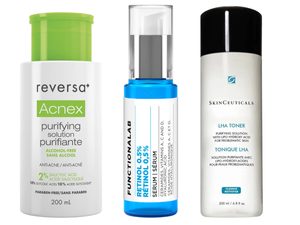How to Get Rid of Clogged Pores, According to a Dermatologist

An expert shares how to treat and prevent whiteheads and blackheads.
Balmy summer days are here and with them come skin blessings (no more dry flakes) and woes (so many clogged pores).
“Various conditions, like increased humidity, can cause stickiness of the skin that can lead to clogged pores,” says Nicole Hawkins, a Calgary-based dermatologist. They materialize in two ways: as closed comedones and open comedones, both of which are small bumps in pores that give skin a rough, uneven texture. “Closed comedones appear white and are sealed off,” she says. “Open comedones appear dark—they’re blackheads—because the natural oils in the skin have mixed with keratinocytes [the cells that make up the outermost layer of skin] and oxidized.”
The main concern with clogged pores is they have the potential to manifest into pimples. “If you look at any diagram of how pimples evolve, it usually starts with a clogged pore, and then it evolves with inflammation and bacteria,” says Hawkins.
But just because the temperatures are rising doesn’t mean everyone’s comedoomed. Clogged pores are more likely to appear on people with larger pores and oily skin (both of which can be dictated by genetics) as well as people who are stressed, since stress can increase skin’s oil production, says Hawkins.
If you are prone to clogged pores, Hawkins is here to help. Below, her best tips for preventing and treating them.
Resist the urge to squeeze or pick
Yes, it’s the same rule that applies to pimples. While it’s certainly tempting to try to extract clogged pores yourself, picking and pinching can damage your skin. ”Even gentle squeezing stretches the pores out, so you’re actually doing yourself a disservice,” says Hawkins. Not to mention, you can also increase your chances of infection. “You don’t want to start with a blackhead and end up with a terrible skin infection, so leave them alone,” she says. “Slow is the name of the game.”
Use special skin care ingredients
There are many powerful ingredients that can help increase skin cell turnover and unclog pores. These include alpha hydroxy acids and beta hydroxy acids. “I really like alpha hydroxy acids, like lactic or glycolic acid, for comedones because they’re not too drying,” says Hawkins. “They can help with exfoliating the skin, they can give you a glow, and they can also help to get rid of blackheads and whiteheads over time.” The keyphrase here is “over time.” Hawkins says clogged pores can’t be scrubbed away overnight. “We ask patients to play the long game with us,” she says. “You don’t want to use products too much or too often or you can cause irritation and set yourself back.”
Hawkins is also a fan of using retinol to help unclog pores. “It helps to control skin cell turnover, helps to decrease inflammation, and shrinks pores over time,” she says. Again, Hawkins stresses “over time.” “This is not something that’s going to happen in just a few weeks,” she says.
If you’re someone who’s never used an AHA, BHA or retinol, Hawkins advises starting slow. First, test the product on your jawline, as it isn’t uncommon to get an irritation with a topical acid. If your skin responds well, go slow—apply it just one night a week, then increase to two, then three times a week. “Personally, I do an AHA three nights a week, and my retinol on the other four nights,” says Hawkins. “But I had to work up my skin’s tolerance to that level.”
Prevent them with non-comedogenic products
Some skin care products are labelled “non-comedogenic,” meaning they don’t clog pores—these are the products, the only products, you should be using, says Hawkins. This goes for makeup and sunscreen as well as moisturizers and serums.
Pack away the heavier skin care products
“Thick foundations can interact with increased oil production and humidity in the air,” says Hawkins, “which can give you a sticky environment on the skin and lead to issues like comedones and acne.” Switch to light formulas and save the occlusives (that includes those for slugging!) for the fall.
For quick-fix, you can use nose strips
“I don’t think they’re bad,” says Hawkins. But nose strips, like the popular Bioré ones ($11, well.ca), are only a short-term fix. “If you have an event coming up, and you’re really bothered by a bunch of blackheads, the strip works nicely to clear them all at once,” she says. “And people tend to tolerate it pretty well—I haven’t encountered many reactions to them.” The catch? They don’t help prevent clogged pores, so you may want to pair the strips with a long-term solution.

Try these:
Hawkins’ favourite products for preventing and treating clogged pores include:
- Reversa’s Acnex Purifying Solution ($29, reversa.ca), which she says is a great choice for anyone who’s acne-prone with large, clogged pores.
- Functionalab’s Retinol 0,5% Serum ($130, boutique.functionalab.com), which is one of Hawkins’ favourite retinols (and what she uses).
- Skinceuticals’ LHA Toner ($55, skinceuticals.ca), which Hawkins suggests for its effective blend of acids.




